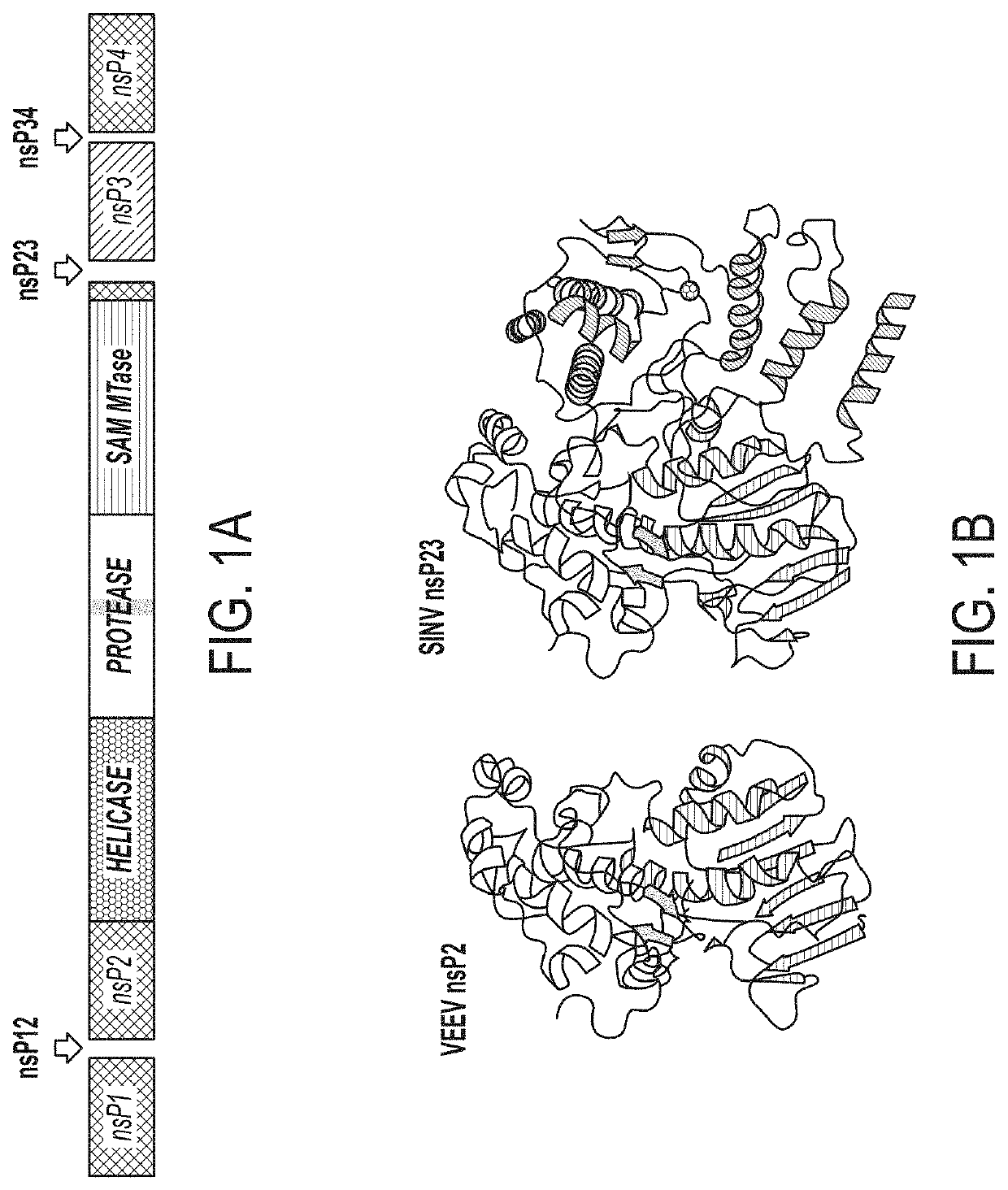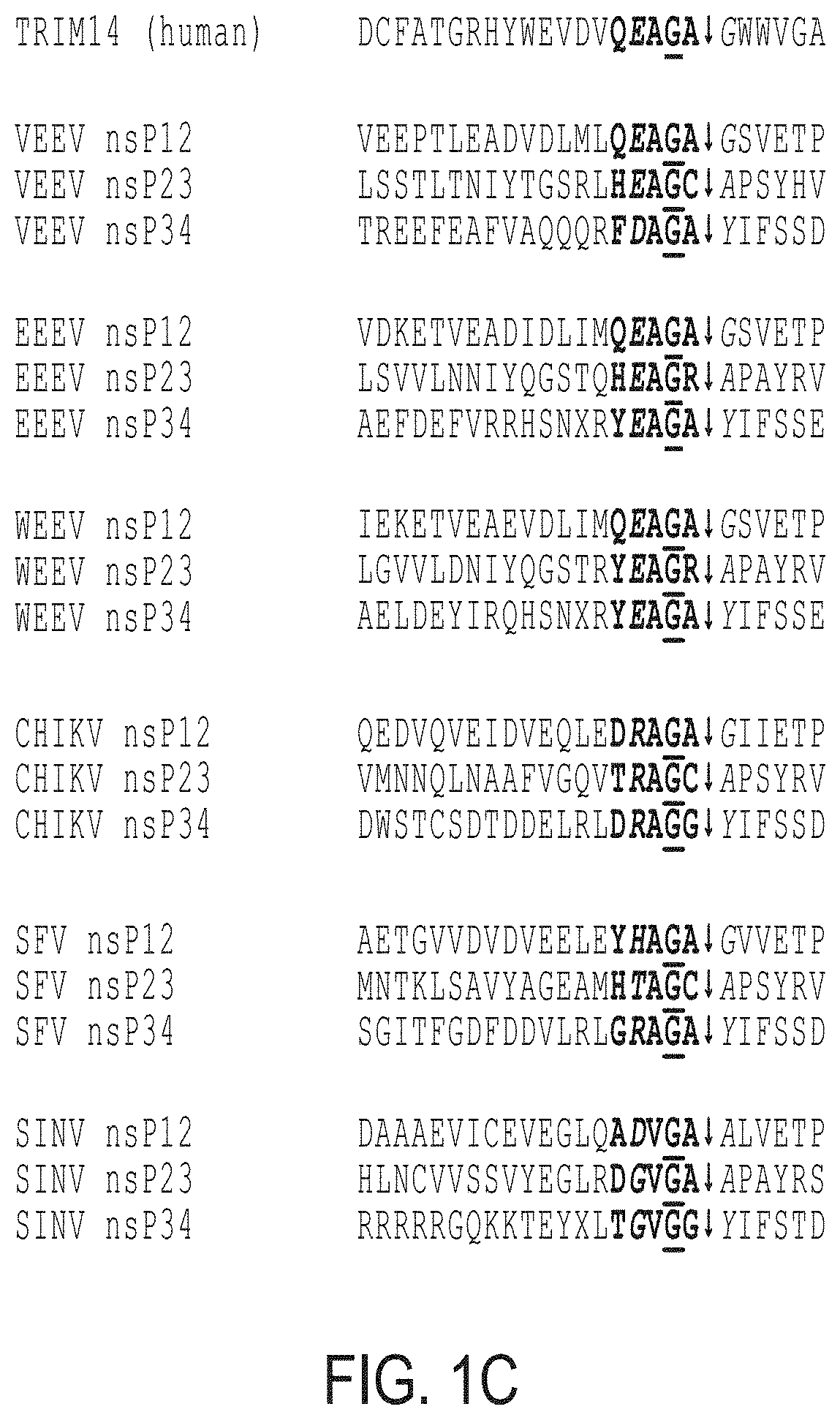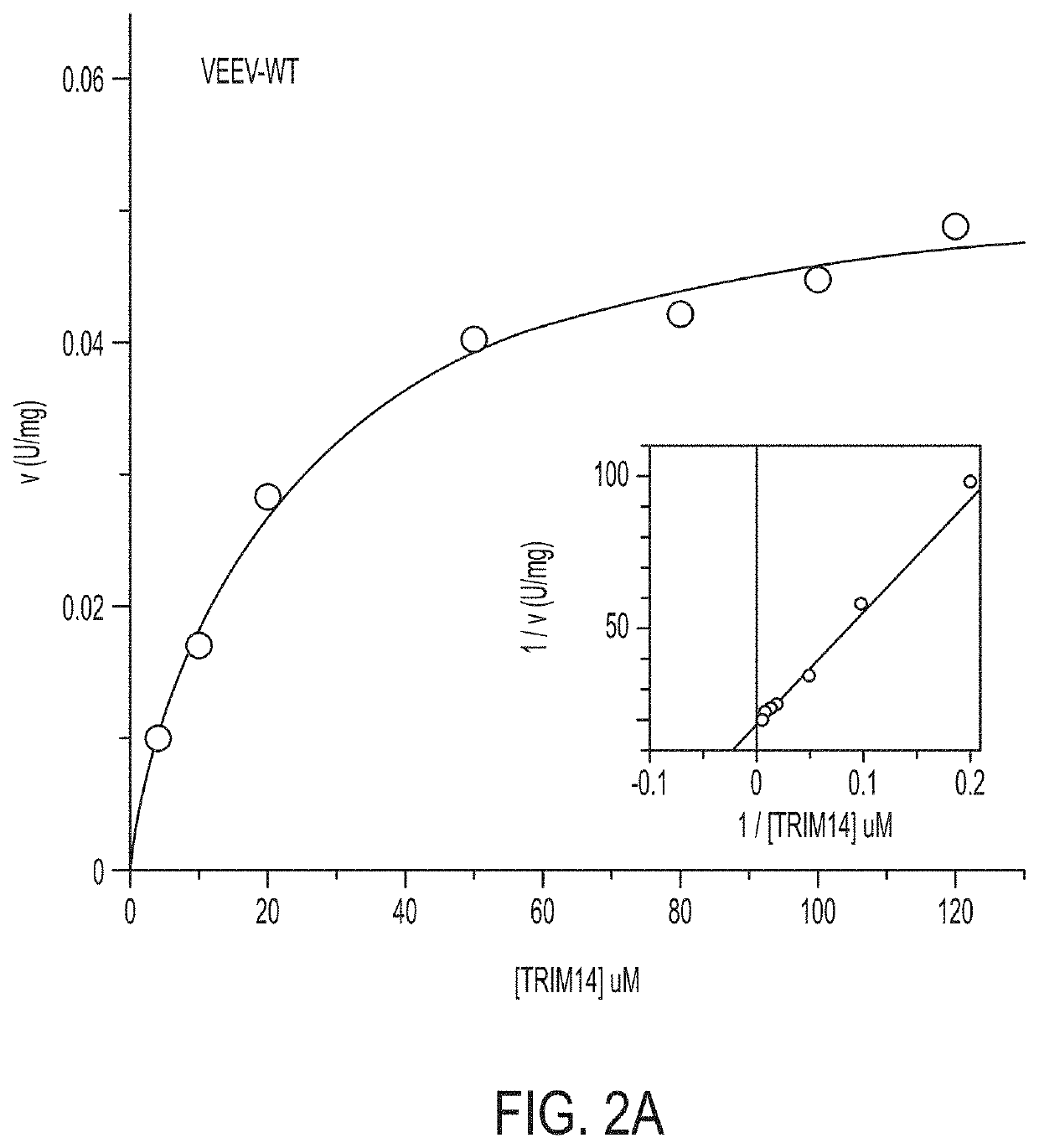Methods and Compositions for the Detection of Host Protein Cleavage by Group IV Viral Proteases
- Summary
- Abstract
- Description
- Claims
- Application Information
AI Technical Summary
Benefits of technology
Problems solved by technology
Method used
Image
Examples
example 1
g Cleavage of Human TRIM14 by the VEEV nsP2 Protease In Vitro and in Virus-Infected Cells
[0045]The sequences N- and C-terminal to the scissile bond that were recognized by the VEEV nsP2 cysteine protease were previously identified using a set of peptide substrates. The 25-residue substrates containing P19-P6′ (Schechter and Berger nomenclature (35)) produced the lowest Km values (30). A BLAST search (36) using the nsP2 cleavage sites and the human proteome uncovered one protein, TRIM14, which had a high level of sequence identity to the VEEV nsP12 cleavage site. The nsP12 cleavage site QEAGA↓G (SEQ ID NO: 1) is highly conserved among the more virulent New World alphaviruses, VEEV / EEEV / WEEV, but not in the Old World alphaviruses such as SINV, SFV, and CHIKV (FIG. 1C).
[0046]Using a cyan and yellow fluorescent protein (CFP-YFP) substrate containing 25-amino acids of the human TRIM14 protein, the purified VEEV nsP2 protease was found to cleave the TRIM14 substrate [SEQ ID NO: 4] (FIG. 2...
example 2
g the Cleavage of Human Sequences by the SARS-CoV-2 Papain-Like Protease In Vitro
[0061]The vast majority of host proteins cleaved by Group IV viral proteases have been shown to be involved in generating the innate immune responses (94). The cleavage of host proteins by viral proteases is a type of transient post-translational or co-translational silencing (FIG. 8).
[0062]A novel bioinformatic method developed by the inventors revealed other potential host substrates in humans (FIG. 8A). Details are provided in reference 95, incorporated herein by reference for the purposes of teaching these bioinformatics techniques. Predicted viral protease cleavage sites could be found in host proteins involved in generating the innate immune responses, but also in human proteins which have not been previously shown to be involved in generating the innate immune responses. These proteins appear to have relationships to the observed virus-induced phenotypes (symptoms). For the SARS-CoV-2 Papain-like...
example 3
g the Cleavage of Human Sequences by the ZIKV ns2B-Ns3 Protease In Vitro
[0065]Human host protein substrates were predicted for the ns2B-ns3 protease of Zika virus. CFP-YFP substrates were: FOXG1, SFRP1, NT5M and Gs, alpha. In animal models, the cleavability of a host protein called STING correlated with the appearance of Dengue virus symptoms and pathology (96). Animals with uncleavable sequences showed little to no pathology. The uncleavable sequences could be made cleavable by single amino acid substitutions.
[0066]Thus, the identity of cleavable sequences [SEQ ID NO: 4, 5, 6, 7-22] may enable the production of transgenic animals carrying these sequences. The recapitulation of the disease pathology, or aspects of the pathology is necessary for testing drugs and vaccines that prevent the pathology. Virus-infected mice and rats often do not display the same pathology as seen in humans. The SFRP1 cleavage site sequence [SEQ ID NO: 21] was the same in humans and chickens; these two spe...
PUM
| Property | Measurement | Unit |
|---|---|---|
| Time | aaaaa | aaaaa |
| Time | aaaaa | aaaaa |
| Bit rate | aaaaa | aaaaa |
Abstract
Description
Claims
Application Information
 Login to View More
Login to View More - R&D
- Intellectual Property
- Life Sciences
- Materials
- Tech Scout
- Unparalleled Data Quality
- Higher Quality Content
- 60% Fewer Hallucinations
Browse by: Latest US Patents, China's latest patents, Technical Efficacy Thesaurus, Application Domain, Technology Topic, Popular Technical Reports.
© 2025 PatSnap. All rights reserved.Legal|Privacy policy|Modern Slavery Act Transparency Statement|Sitemap|About US| Contact US: help@patsnap.com



